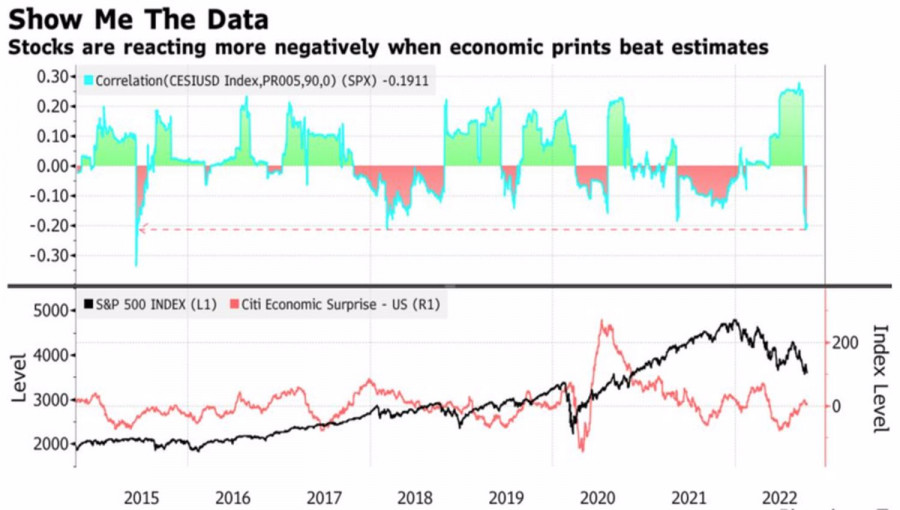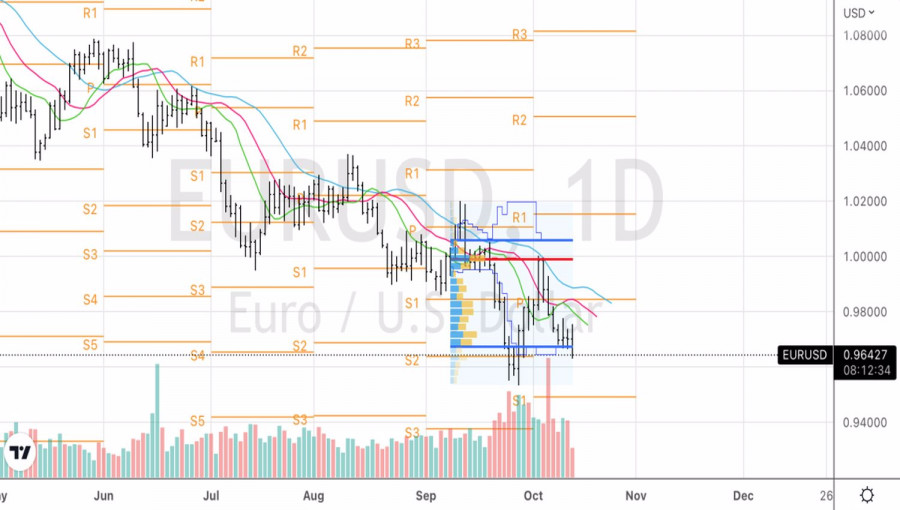While the Fed is trying to catch up with runaway inflation, financial markets, on the contrary, are trying to act ahead of the curve. Investors are trying to predict what the central bank will do and make money on it. Since its actions are based on macrostatistics, interest in fundamental analysis has not been so high for a long time. The correlations of stock indices and the US dollar with the news are off the scale, and the most important release of data on US inflation made the markets hold their breath.
Citi's Economic Surprise Index is an indicator showing the correspondence between expected and actual data. The release of the latter better than the forecast leads to an increase in the index and vice versa. Today, its inverse correlation with the S&P 500 has reached its highest level since 2015, and its direct relationship with the US dollar is the highest in the last 5 years. This explains why bad news for the economy is good news for the stock market, and good news for the US dollar. It acts as the main safe-haven asset and is sensitive to changes in global risk appetite.
Dynamics of the S&P 500 index and economic surprises

Given the seriously increased demand for macro strategies in the financial markets, the interest in the release of US inflation data for September looks logical. Credit Suisse notes that the futures market has fully priced in the 75 bps increase in the federal funds rate at the November FOMC meeting. At the same time, CME derivatives see borrowing costs rising only 55 bps in December. The indicator is able to go up, which allows us to talk about the untapped potential of the EURUSD peak. The company believes that strong data on CPI will provoke a move towards 0.95, followed by a fall to 0.92. On the contrary, the weak ones will allow the euro to once again test the parity.
The reaction of the main currency pair to the acceleration of core inflation to 0.6% MoM and up to 6.6% YoY proves that Credit Suisse is most likely right. Core prices are not going to slow down, no matter how hard the Fed raises the federal funds rate. It dropped 100 pips in a couple of seconds! For a long time, this has not happened as a reaction to the release of any macro indicator.

You can, of course, point to the time lag between tightening monetary policy and the economy reacting to it, but what the Fed is seeing now convinces it that the job is far from done. I won't be surprised if instead of 125 bps to the rate until the end of the year, it will be 150 bps. This circumstance opens the way for a further fall of the euro against the US dollar.
On the EURUSD daily chart, the break of the lower limit of the fair value range of 0.967–1.006 allowed us to open short positions as part of the previously announced strategy. The intermediate targets for the downward movement are 0.949 and 0.942, where important pivot points are located. The recommendation is to keep shorts and periodically increase them on pullbacks.
Trading analysis offered by Flex EA.
Source



Please do not spam; comments and reviews are verified prior to publishing.